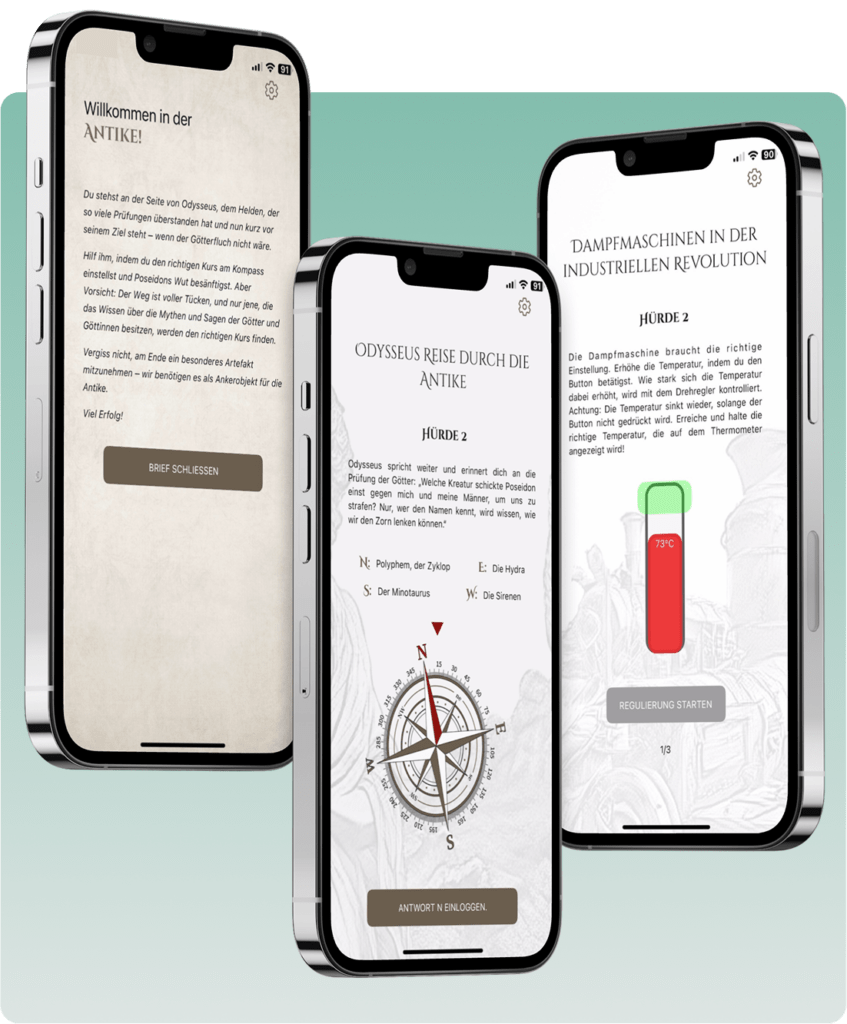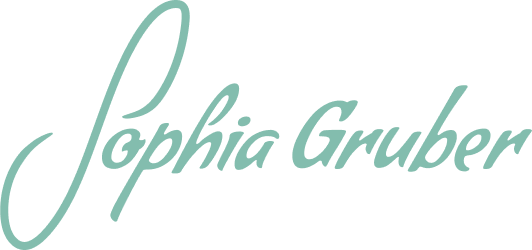Time Parabox is a puzzle game that combines a physical escape box and a mobile app to solve riddles with sensor technology.
Project Management
•
Product Owner
•
Frontend Development
•
Logo Design
•
Writing & Storytelling
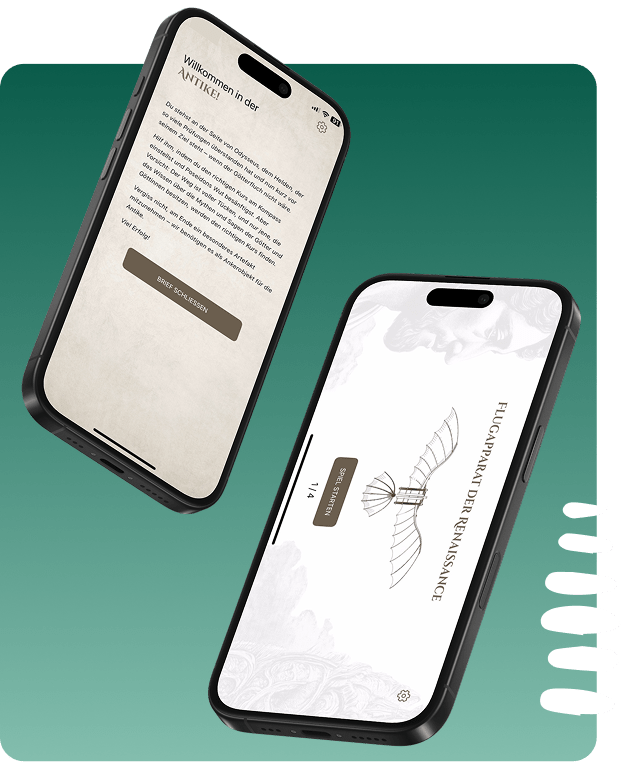
Overview
Scope
Time Parabox is a student group project done in a team of ten Master’s students.
The educational aims of the project were the use of native sensors in the smartphone and external sensors. Data was exchanged with the external sensors, which were controlled by an ESP-32, via Bluetooth Low Energy.
The project combines a physical puzzle box, equipped with various sensors, and an accompanying cross-plattform native mobile app. Together, they enable an interactive escape game in which the players embark on a journey through different historical eras.
Involvement
Project management, Product Owner, frontend development, logo design, writing & storytelling
Date
October 2024 - January 2025
Tools and Technologies
Figma, React Native, Expo, Webstorm, Github, Jira, Confluence
The Problem
Traditional escape games offer engaging puzzle experiences but often lack deeper storytelling, historical immersion, and the integration of modern technology. While many escape rooms focus solely on physical puzzles or digital challenges, few successfully combine both elements into a cohesive and interactive adventure.
There is a growing demand for immersive, interactive, and story-driven puzzle experiences that appeal to escape game enthusiasts, history lovers, and tech-savvy players alike.
A Game Combining The Tangible And The Digital
Objective
Time Parabox bridges the gap between traditional escape games and immersive storytelling by combining physical puzzle elements with modern technology. Players embark on a thrilling time-travel adventure, solving paradoxes across different historical eras through a blend of mechanical and digital interactions.
The game features a multi-chamber escape box, each representing a distinct historical period, from the Middle Ages to the Renaissance. Equipped with sensors, NFC technology, and an accompanying mobile app, Time Parabox offers a unique hybrid experience where players physically interact with artifacts while receiving digital guidance and feedback.
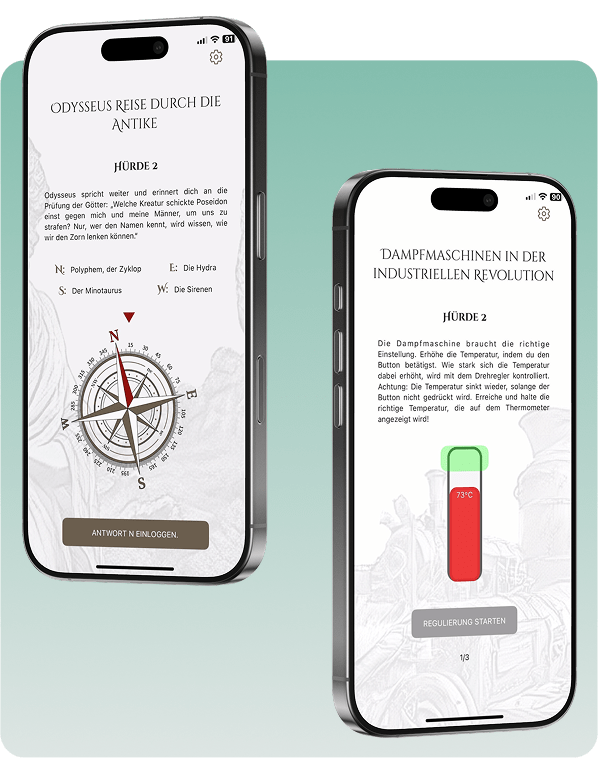
Game concept
Time Parabox combines the concept of an escape box with an exciting time travel story. Players take on the role of time travelers who travel through different historical eras to repair paradoxes in contemporary history.
In each era, players must solve specific puzzles that involve both physical and technical elements. By interacting with various artifacts and mechanical and digital puzzles, players are tasked with unlocking the secrets of each era in order to open the respective boxes. The game combines classic escape room elements with modern technology, which is used variably depending on the design to create an immersive and captivating gaming experience.
A main box is built for the game, in which other smaller boxes are located, each containing puzzles from different eras. Solving these puzzles is necessary to complete the game. The game is played in combination with a native app, which is used to control and interact with the boxes and the integrated technologies.
Target Users
Time Parabox is designed for escape game enthusiasts, history lovers, and tech-savvy players who enjoy immersive storytelling and interactive challenges. It appeals to puzzle fans seeking new and innovative escape game formats, history and culture enthusiasts who appreciate educational yet entertaining experiences, and tech-driven players fascinated by sensor-based gameplay and digital interactions.
Additionally, educators and families benefit from its gamified learning approach, making it an engaging tool for teamwork, problem-solving, and historical exploration. By blending physical and digital puzzle-solving, Time Parabox offers a unique and captivating experience for a wide range of players.
Turning An Idea Into A Plan
Before starting development on the app and building the box itself, we went through extensive ideation and planning. This was essential, as the project came with a wealth of major challenges:
- Time constraints and a hard, non-negotiable deadline
- The large amount of people involved
- The scope of the project itself and its many interdependent parts
- The novelty factor of the tools and technologies, which many of us had never worked with before (React Native, Bluetooth connectivity, microcontrollers, native and external sensors, electronic engineering, building the phiysical puzzle box itself)
Project Management
Project management was key in order to overcome all these challenges. As Product Owner, I was responsible for project management together with a second colleague. Our primary task was to take all these ideas and turn them into actionable steps on a cohesive roadmap, and to react swiftly in case of blockages. To keep up with the tight schedule, we defined a set of successive milestones, dependencies, and deadlines.
We used Scrum rituals to keep the entire project team up-to-date on the current status. We also held backlog refinements every other week before the next sprint would begin. We also organised, moderated, and documented weekly jour fixes with the entire team, where we discussed updates, challenges, and roadblocks.
Jira and Confluence were used for collaboration. All project-relevant information and assets were stored in Confluence and organizational content such as meeting minutes, areas of responsibility and shopping lists were also collected
Concept and Design
A thorough conceptualization phase preceded development. We created detailed designs of all aspects of programming, hardware, and storytelling.
Apart from project management, I also contributed to puzzle design, storytelling and writing, and took care of financing matters during this phase, as the project required a budget that was covered by a project stipend from the university. I also facilitated communication and collaboration between team members regarding interdependencies of concepts that were being worked out.
Diagrams To Visualize Time Travel Shenanigans In The In-Game Story, By Laura Kainzbauer
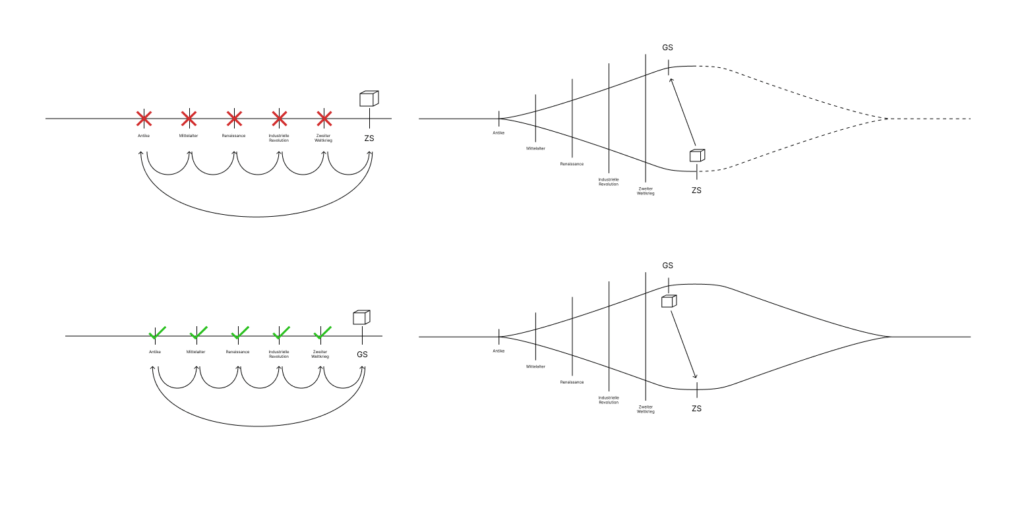
Logic Diagram For The Renaissance Riddle, By Laura Kainzbauer And Myself

Wiring Diagram For The Microcontroller And External Sensors, By Lukas Gruber
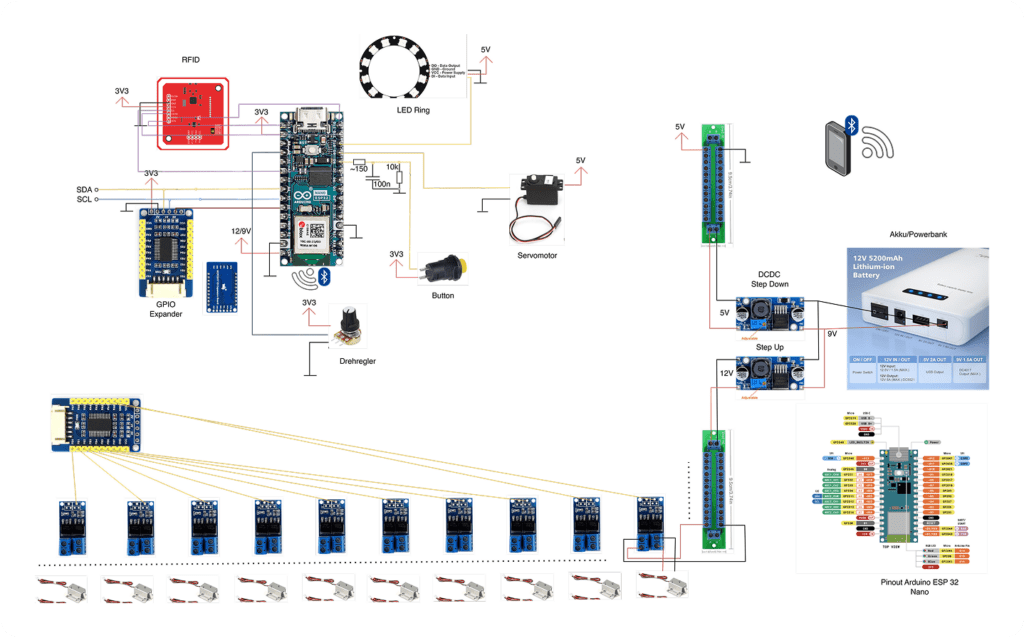
Construction Sketch For The Riddle Box, By Robin Backnecht

Class Diagram For The App's Game Logic, By Selina Lehner
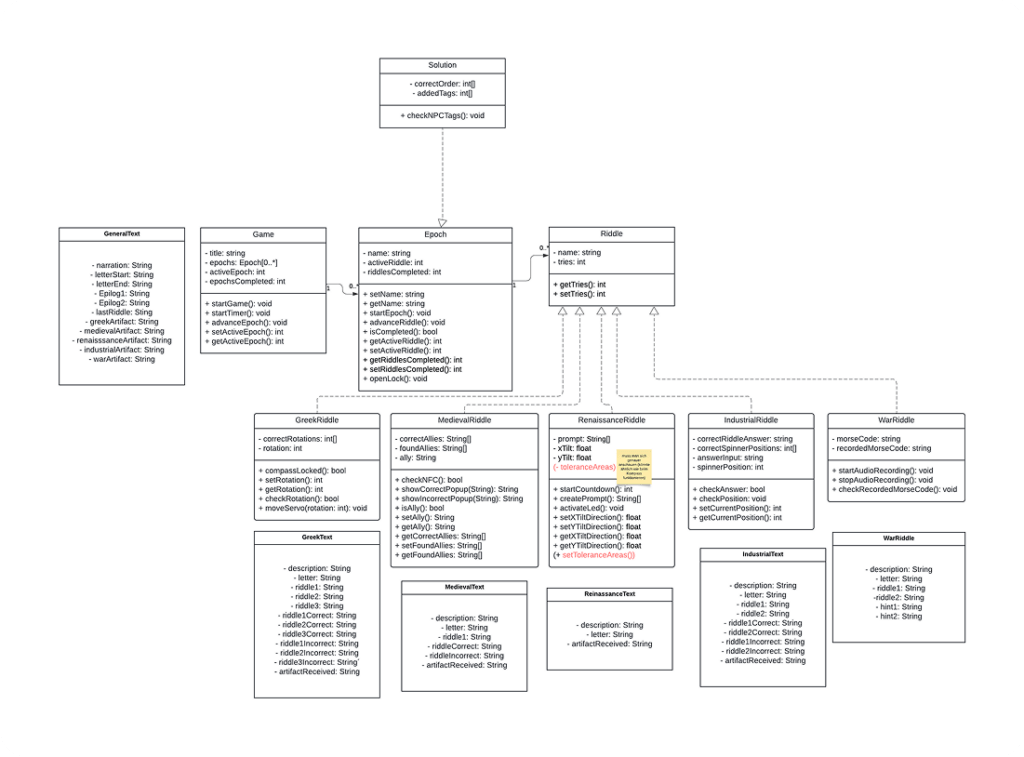
App Wireframes, By Vanessa Hofer, Sara Ladner, and Selina Lehner
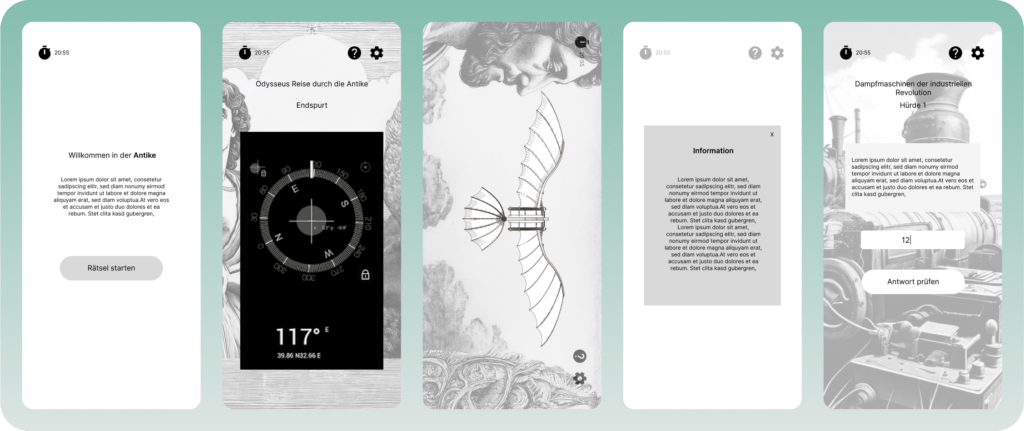
High-Fidelity Screen Designs, By Vanessa Hofer, Sara Ladner, and Selina Lehner
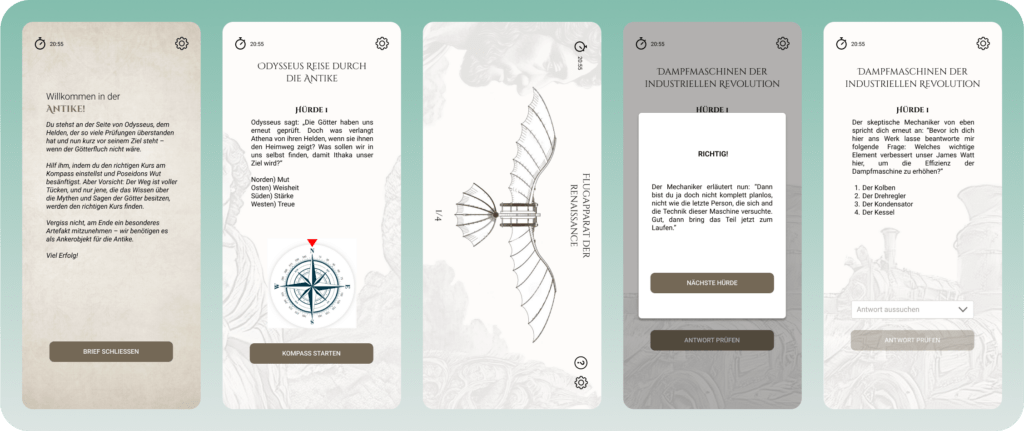
Logo Design
As part of our project's exhibition at the St. Pölten UAS's project vernissage, which I prepared together with a second team member, I also designed a logo for our product.
The logo features the text “Time Parabox” in the Cinzel Decorative typeface that is also used for highlighted text in the app. It is complemented by a graphic depicting two three-dimensional cubes, mirrored along one corner. The shading and silhouette of the cubes create an abstract hourglass shape, so as to subtly incorporate the theme of time into the logo. Additionally, the mirrored cubes reference the parallel timeline from which the player receives the box in the game's storyline.
Time Parabox Logo
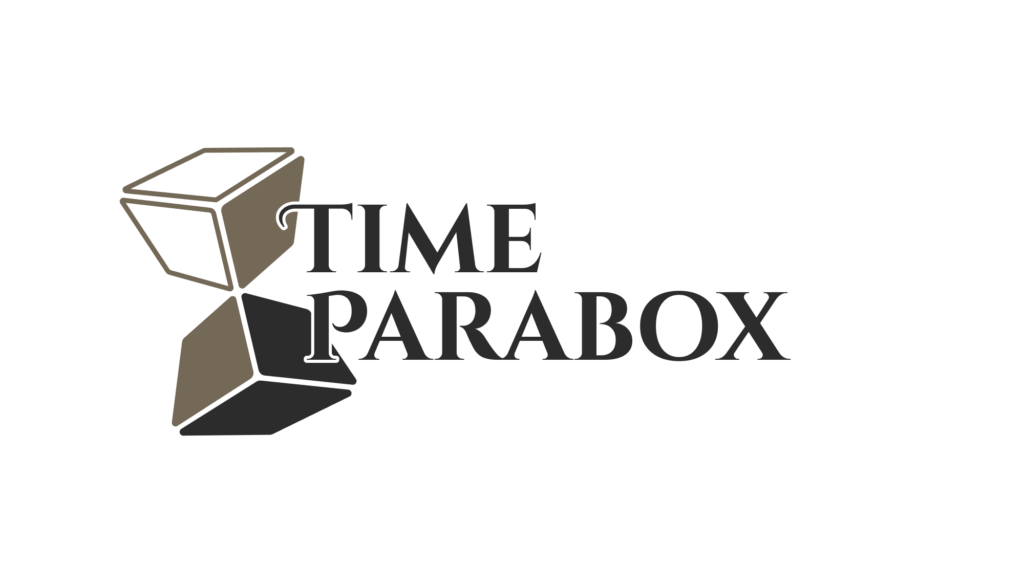
In addition to the logo, I also created an animation to use for our project exhibition stand in order to generate some interest through motion.
Logo Animation
Development
Having laid the groundwork for development with our detailed planning phase, development started smoothly. However, the development phase still required a lot of foresight and coordination to manage the amount of team members and the many dependent components of the project (for instance, only one person or pair could work on or test data transfer with the microcontroller at once).
The Primordial Microcontroller Cable Salad, Photo By Lukas Gruber
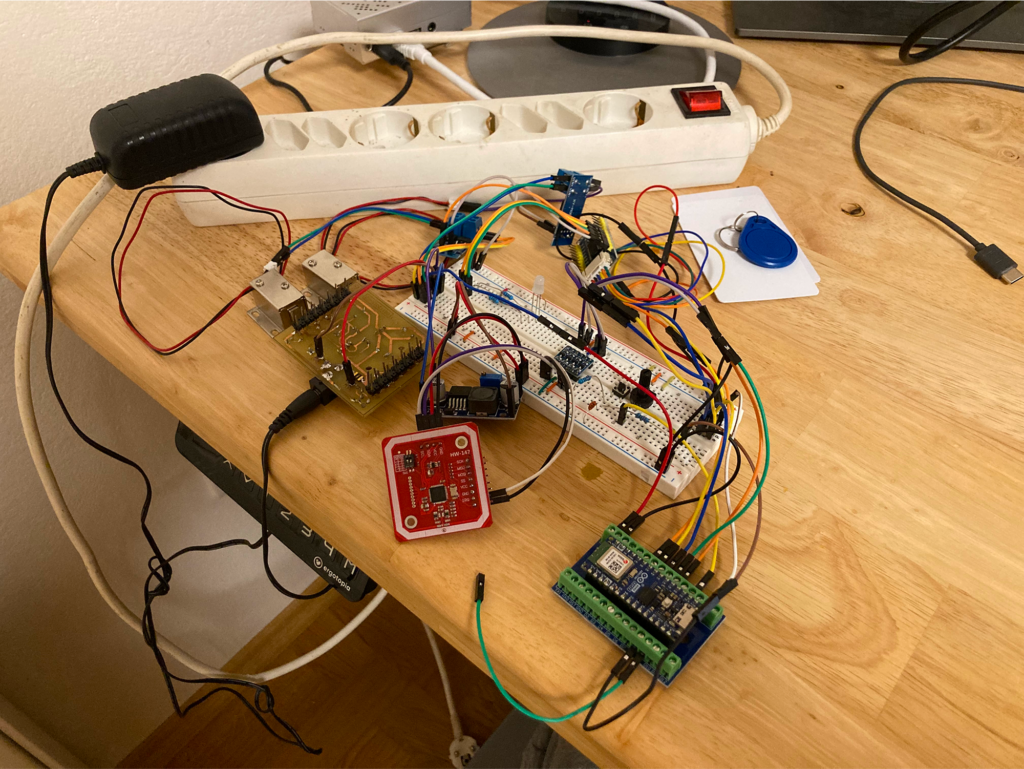
Challenges In Project Management
In terms of project management, keeping up consistent and frequent communication with all team members and the status of the tickets they were working on was essential to detect and react to roadblocks in a timely manner. As project managers, we had to stay on top of everything that was going on at different ends at the same time, detect dependencies, and facilitate communication between team members.
We started by laying the groundwork for both the app and the microcontroller for the puzzle box. Having ten team members meant we were able to get a lot of work done within a single sprint. However, it also required careful planning due to the many interdependencies we had to deal with between the construction of the physical puzzle box and its chambers, the electrical engineering, the programming for the microcontroller, the bluetooth connection, the 3D-printing for physical puzzle components, and the frontend development for the cross-platform mobile app.
Painting 3D-Printed Puzzle Components
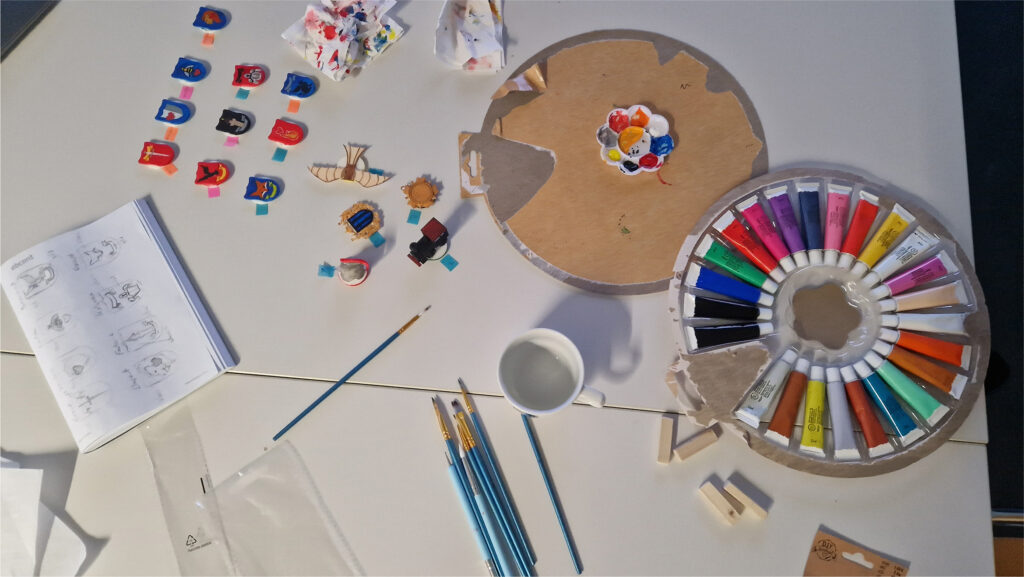
Wiring Electrical Components Together
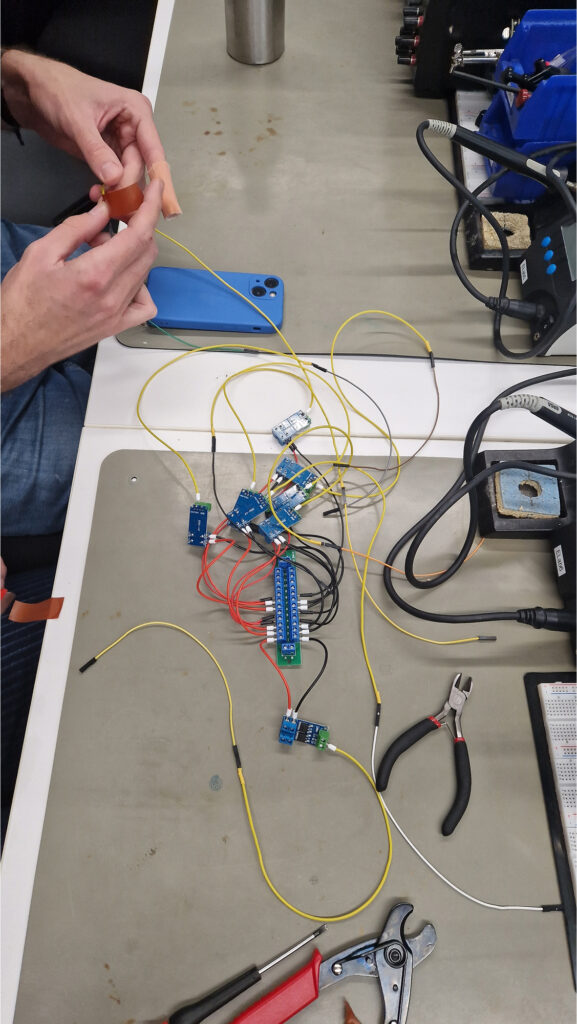
Learning To Expect The Unexpected
We hit a snag around the time we had half the puzzles done when we planned a full round of testing with the app and the puzzle box right before the winter holidays. Before we could even start testing, a fault in the electrical engineering caused a short circuit in our microcontroller, damaging it beyond repair.
Although we were able to work with a backup, we had to postpone testing until after the holidays. We were already cutting it close to our deadline, with the project vernissage happening just two weeks later. Still, we finished the remaining puzzles over the holidays and ordered new parts to replace the damaged ones. Afterwards, we organized a full-day workshop to do thorough testing and bugfixing, and to put all the pieces together for the physical puzzle box.
Another issue that came up at the same time were the specifications of the servomotor we ordered. As it turned out, our puzzle design called for a type of servomotor that we weren't able to procure, so we had to circumvent the restrictions of the physical component with some tricky coding to make it work with our intended puzzle design.
Putting It All Together
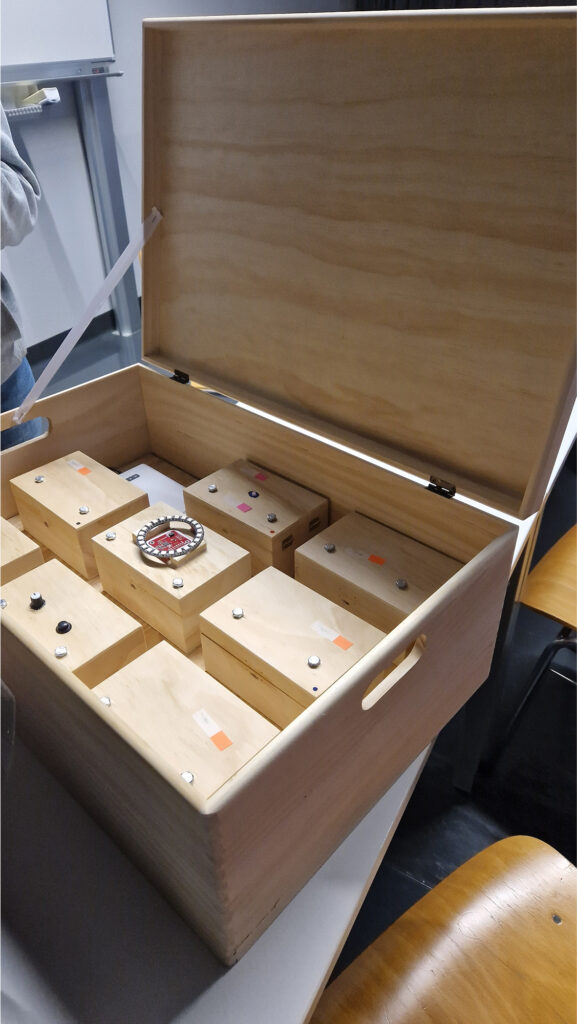
Sticking The Landing
By staying organized and keeping up constant communication, we were able to reach all our deadlines. We had some minor bugs left over that we were able to fix in the week after the project's exhibition at the university's vernissage, just in time for the hand-in date of the project.
Overall, this project was a really exciting, educational challenge from both an organizational and a technical standpoint. In terms of project management, it confirmed the superior efficiency and flexibility of agile software development to me. By adhering to Scrum, we were able to create a truly fun and unique experience that is greater than the sum of its parts.
The Final Box
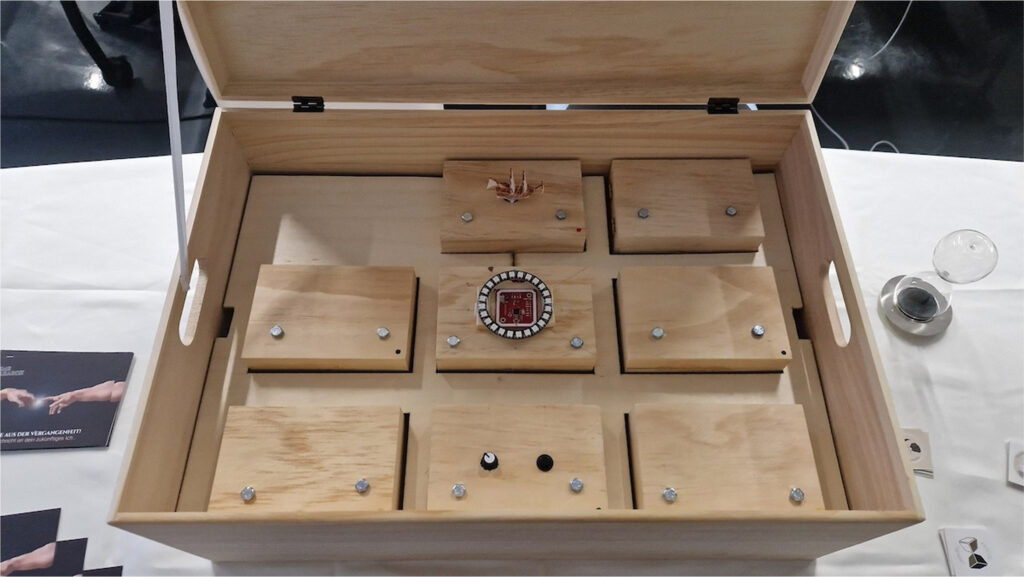
The End Result
With the Time Parabox project, we successfully met all milestones, with final development efforts completed during intensive workshops. Key tasks included finalizing the last sprint, thorough testing on Android and iOS, bug fixing, and assembling the puzzle box. A detailed bug list was created and largely resolved, though minor issues remained, such as Android voice recognition limitations and UI display errors in the development build.
A significant challenge was the Bluetooth data exchange, which required close collaboration across different areas. Hardware issues also arose, including a burnt-out microcontroller due to a short circuit and servomotors delivered with the wrong specifications, both of which required last-minute substitutions. After the fix, the microcontroller continues to draw more power than expected, which poses a risk of overheating with prolonged use.
Despite these obstacles, the core electronic and mechanical components functioned as intended. We implemented workarounds where necessary, such as adjusting the app’s 360-degree positioning logic to accommodate the limitations of available servomotors. Our iterative approach and problem-solving mindset ensured a fully playable and immersive time-travel escape experience for the final exhibition. Remaining issues were documented for future improvements.
